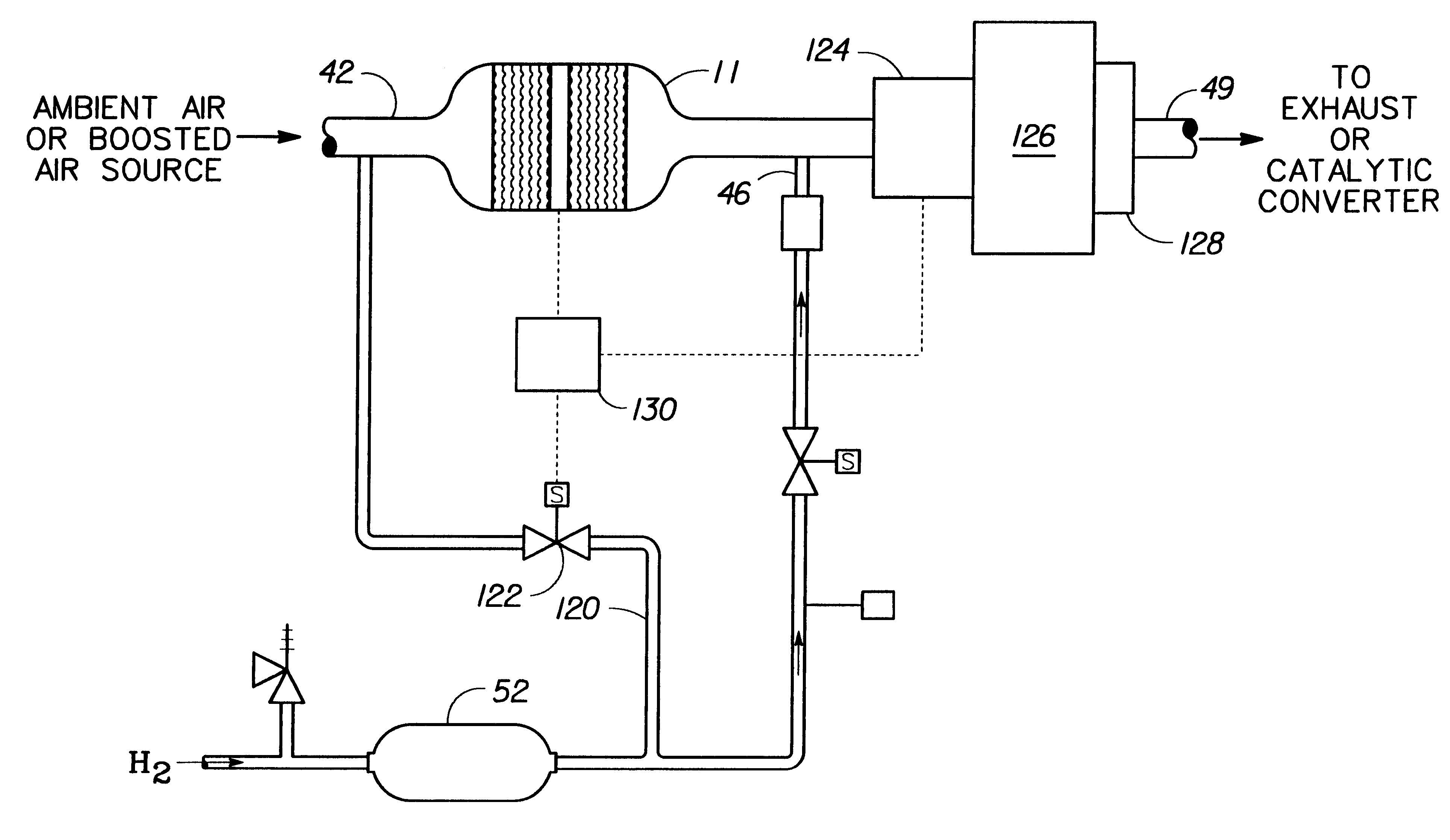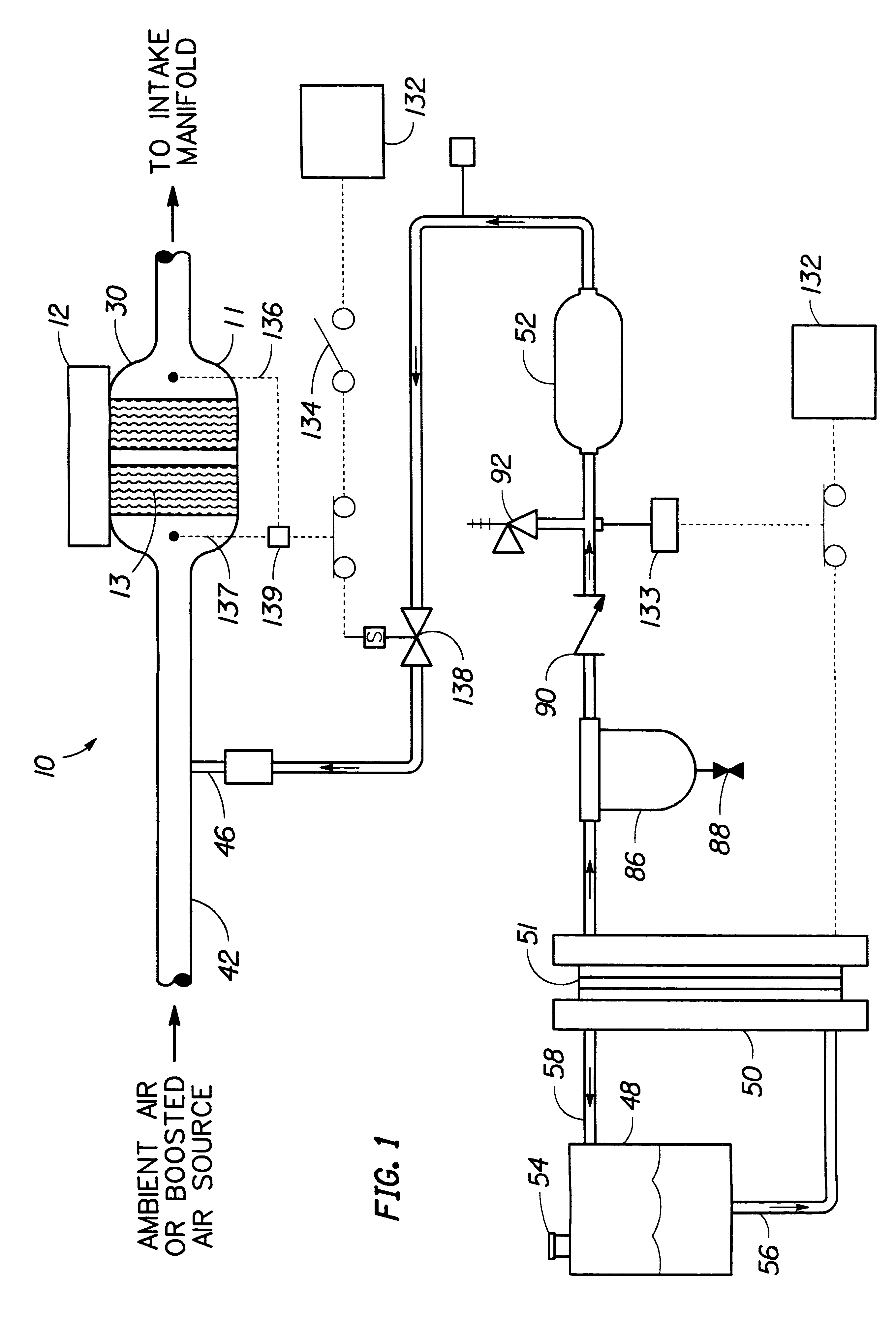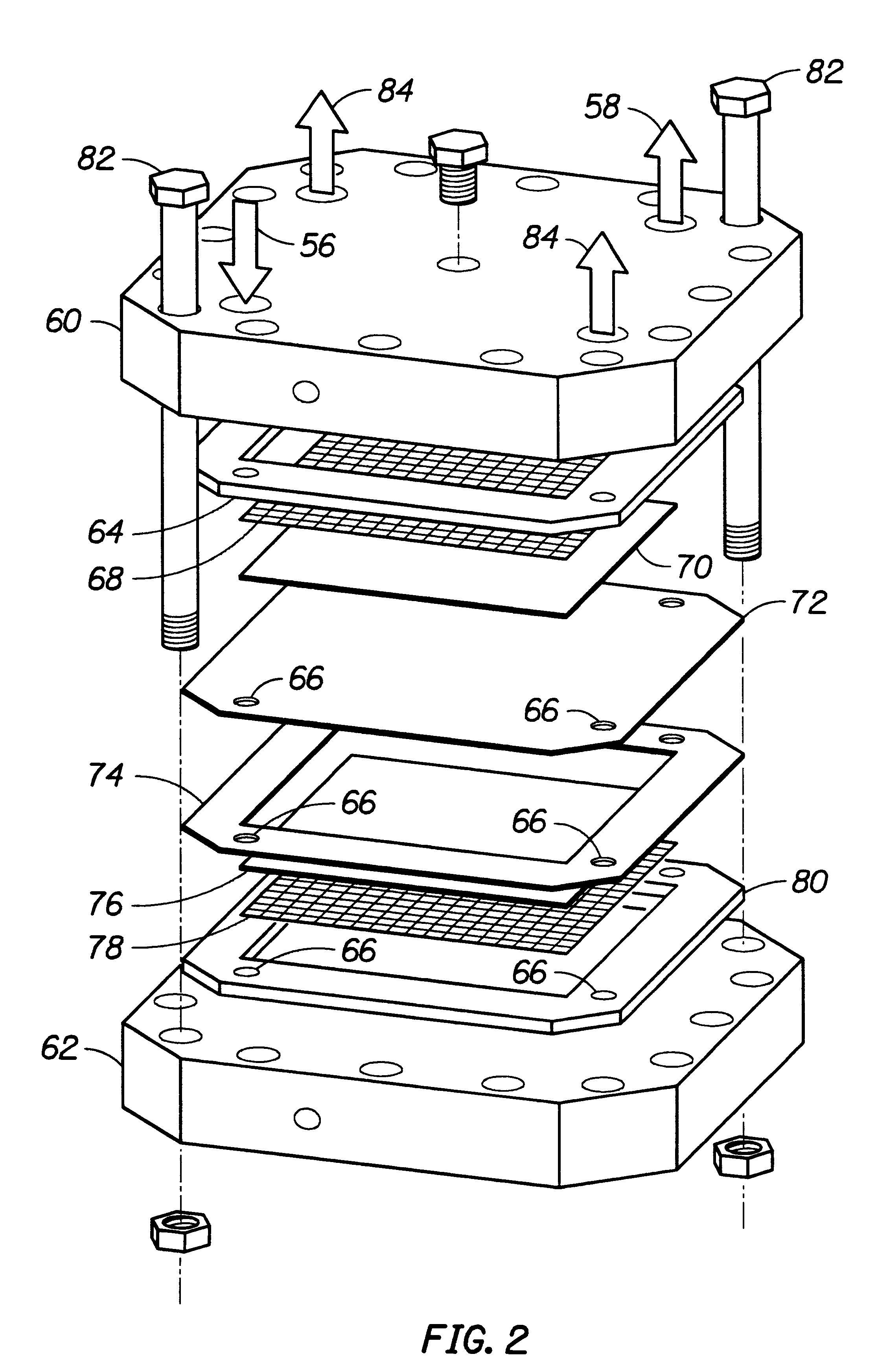Method and apparatus for warming intake air to an internal combustion engine
a technology for internal combustion engines and cold startup, which is applied in the direction of machines/engines, combustion-air/fuel-air treatment, and separation processes, etc., can solve the problems of mechanical wear, loss of overall lubricant effectiveness, and further increase of mechanical wear
- Summary
- Abstract
- Description
- Claims
- Application Information
AI Technical Summary
Benefits of technology
Problems solved by technology
Method used
Image
Examples
Embodiment Construction
The present invention relates to accelerating the operational availability of internal combustion engines, including both compression ignition and spark ignition engines, by shortening the required "warm-up" period between cold start-up and achieving efficient operating temperature. The present invention is also effective for minimizing mechanical wear in internal combustion engines resulting from unwanted condensation of atomized or vaporous fuel on cold cylinder walls during start-up of combustion engines. Furthermore, the present invention provides for improved catalysis for the reduction of emissions during cold start-up of internal combustion engines.
More particularly, the present invention relates to a method and apparatus for warming internal combustion engine components such as the block, intake air (oxidant) to the engine, fuel to the engine, the engine lubricant, the battery or other devices associates with internal combustion engines using resident or on-board equipment a...
PUM
| Property | Measurement | Unit |
|---|---|---|
| molar ratio | aaaaa | aaaaa |
| thick | aaaaa | aaaaa |
| area | aaaaa | aaaaa |
Abstract
Description
Claims
Application Information
 Login to View More
Login to View More - R&D
- Intellectual Property
- Life Sciences
- Materials
- Tech Scout
- Unparalleled Data Quality
- Higher Quality Content
- 60% Fewer Hallucinations
Browse by: Latest US Patents, China's latest patents, Technical Efficacy Thesaurus, Application Domain, Technology Topic, Popular Technical Reports.
© 2025 PatSnap. All rights reserved.Legal|Privacy policy|Modern Slavery Act Transparency Statement|Sitemap|About US| Contact US: help@patsnap.com



